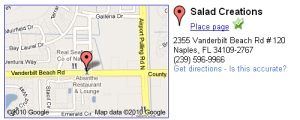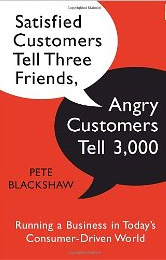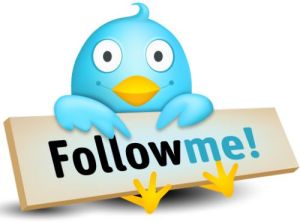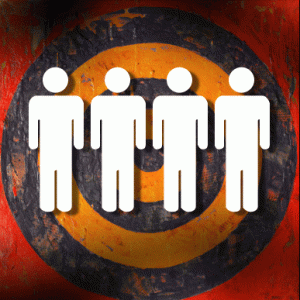
First, I am not making this up and second, I very rarely complain openly on a social platform about another company underperforming in the customer service area. But I am so angry, that I have to get this out before it subsides, because I think it’s important for management to know when they can do better.
Today my wife and I decided to try some place new for lunch. So it was, that we chose Salad Creations in Naples, Florida.

Now this story has nothing to do with crossed signals. misleading signage, or poor service on the front end-this is all about what happened at the middle and the end of eating. I ordered a Chinese chicken salad-It looked good in the picture and I was starving and anxious to see how it might taste, given that this was my first time. First impression? The salad could have been a little crispier but trust me, I understand, they’re a restaurant focusing on salads.
About mid-way through my salad, I ate a piece of chicken that did not taste right. An alarm of sorts went off in my head but given that there was an ample amount of dressing on it, I forged on.
A few bites later, I had another bad piece of chicken. It just did not taste right. You know what I’m talking about. After I swallowed it, I sat there for a bit and immediately got up and went to the bathroom because I thought I was going to be sick.
So I come back from the bathroom, sit down, and tell my wife, and am now waiting for the right moment to talk to “the manager”. I wanted to be discreet and just wanted to let him know that I thought the chicken did not taste “right”. I wasn’t looking for a handout or a new meal and frankly, I wasn’t even sure I could even eat another thing at that point anyway!
So I finally get a chance to tell the manager, at which point he and another employee grab a toothpick each, stick it into some of the chicken*, eat it and look up and say, “No, the chicken tates fine” and go back to what they were previously doing. Really? Did you just blow me off? (*Note: Initially I thought they had stuck a thermometer into the chicken, but my wife told me they stuck toothpicks in the chicken and tasted it themselves…)
So they were essentially saying, “No, you’re wrong, we’re right and that’s that!” Thank you very much Buh-bye? Next!
Which caught me and my wife completely off guard. But then he compounds things. He starts muttering how he eats chicken every day and it’s fine, and some other various, under-his-breath, inaudible things directed at me- He’s obviously perturbed at my complaint. It was almost as if he was calling me out and saying I was full of it.
I’m thinking he can’t possibly be doing this. I interrupt his rant and say, “Wait a minute, I eat chicken all the time too, and it just did not taste right.” I’m thinking it was supposed to be and meant to be a constructive comment- but don’t mutter under your breath how I’m wrong and crazy and you’re right. You can’t be serious.
At which point I asked him out loud.
Who is the customer?
He says, “You are, and then says, “All of you people are the same, wanting something for free…”
Did he just say that? Are you kidding me? Did he honestly just say that? I didn’t want a thing. I’m trying to turn this into a teaching lesson.
I asked him again. Who is the customer? I think I was hoping that somehow I could convey telepathically to him about how I write and talk about customer service all the time, and that somewhere, maybe, just maybe, a light would come on and he would come to his senses and say…
“OMG, You’re right! You are the customer, I’m so sorry, what can we do to make it right?”
Sadly things deteriorated quickly and all he kept saying was that you people are all the same. Was I just stereotyped? I was wearing baggy jeans…Ironically, I thought that Salad Creations had potential, but what my man, the completely irrational manager failed to realize was this:

I am now the latter and not the former…Maybe he just had a bad day, maybe not, but either way, don’t take it out on me.
So what are the lessons here?
- The customer will always be right.
- The customer can be your brand champion or your arch enemy, it’s your choice.
- The customer has a voice it never had before, and it’s getting more powerful.
- The customer has the tools to make or break a company
- A bad customer experience can go viral
3 questions:
1) I wonder what the response will be?
2) Will they respond at all? and
3) If you were them, how would you handle the situation now?












